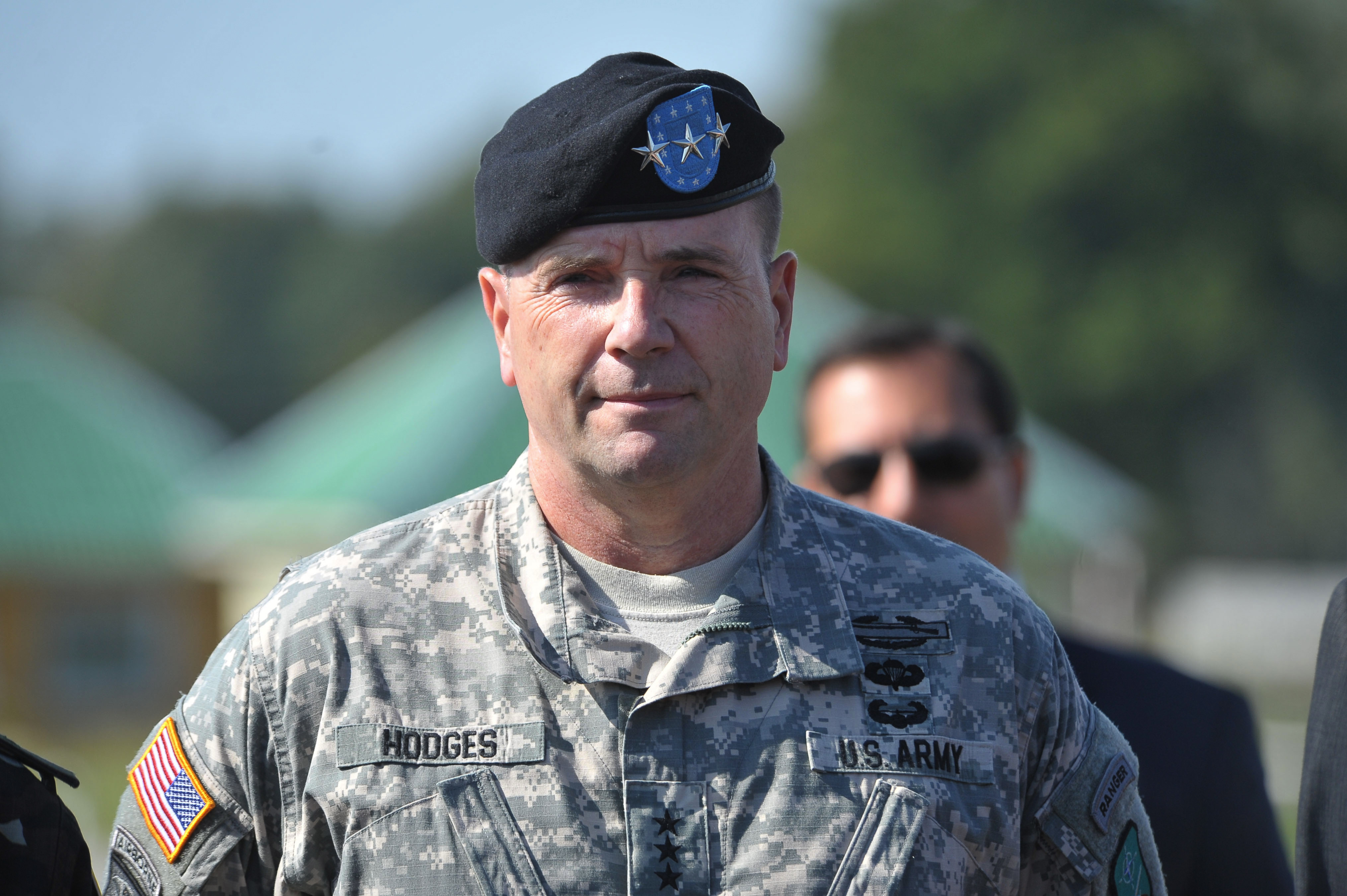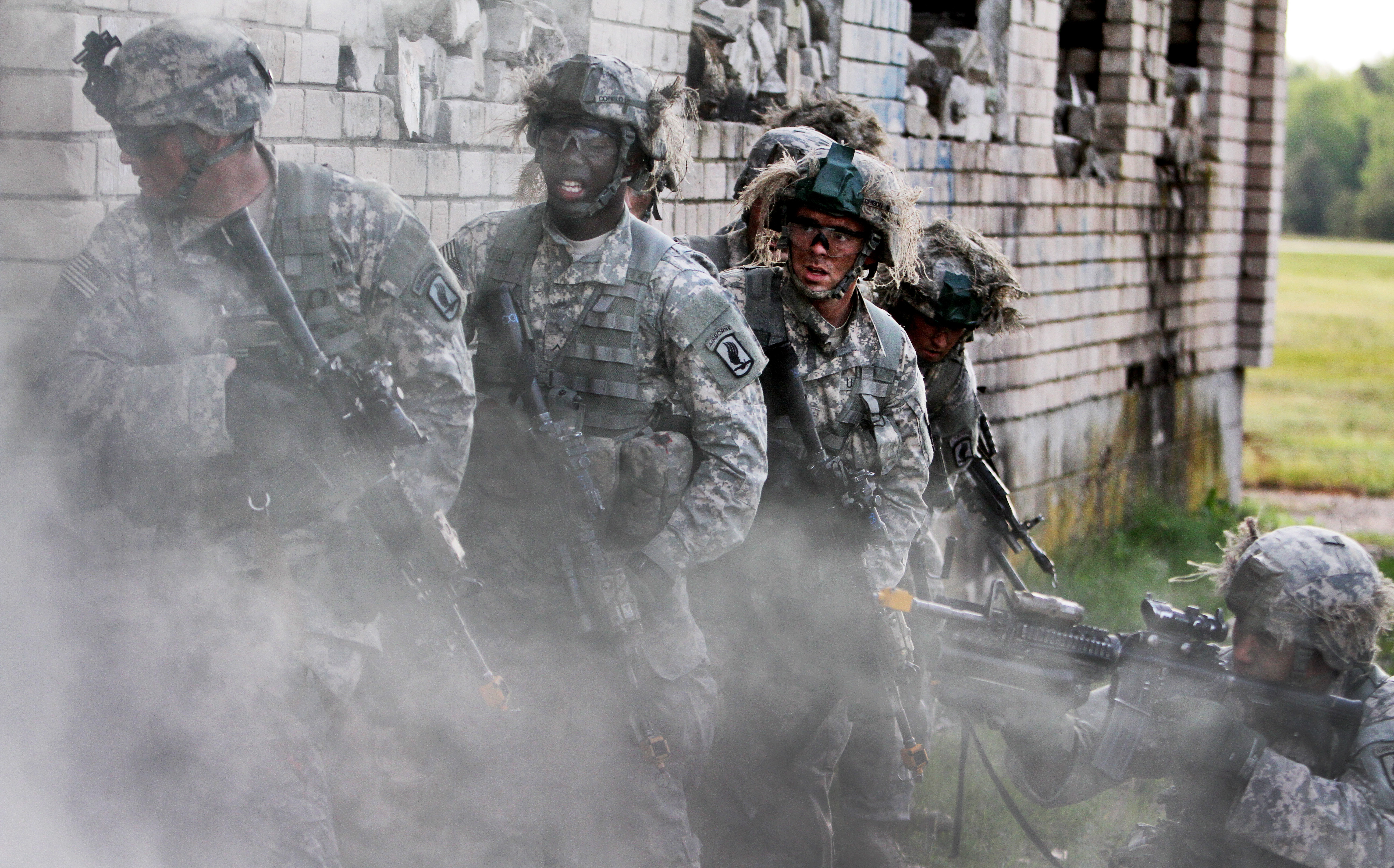LVIV, Ukraine — After decades of calmness, Europe is returning to the state of strained military tension.
The signs are there: A possibility of Russian onslaught to the west is being discussed, espionage scandals are quaking the continent, and both NATO and Russia are holding their biggest military maneuvers since the end of the Cold War.
The growing tension should be taken seriously, according to retired Lieutenant General Ben Hodges, the commanding general of U. S. Army Europe in 2014–2017 and currently a member of the Center for European Policy Analysis (CEPA), a Washington-based research institute.
Hodges told the Kyiv Post during an interview on the margins of the Lviv Security Forum on Oct. 25 that he believed Moscow was preparing to regain masterdom over its lost domains in Europe.
But there is still a chance to prevent the clash — and for this, the United States needs to continue increasing its military presence and defense infrastructure in the continent and to keep ensuring its commitments to NATO allies and partner nations, such as Ukraine.
The more cohesive and prepared the allies are, Hodges believes, the further Europe is from a disaster.
No illusions
Hodges took lead on U.S. forces in Europe in November 2014, during the time of clashes between the Ukrainian army and combined Russian-separatist forces in Donbas.
The war in Ukraine’s east, as well as Russia’s annexation of Crimea, was a signal to the American command based in Germany: Despite all expectations that emerged after 1991, post-Soviet Russia would not be going to be a partner for the United States, and its aggression posed a direct threat to NATO nations.
U.S. needed to assure their allies in Europe that they are still committed to them.
“We had only one company of paratroopers in Estonia, Latvia, Lithuania, and Poland to communicate to those allies, to show that the U.S. is still there, we’re still committed,” he said. “Everybody recognized this was not enough.”
Like that, his mission changed from assurance to allies to deterrence of Russia.
From that point, the United States Army Europe reinforced its troops with new armor, artillery, and aviation. Besides, in 2015, following the new logic of deterrence, the American command also started providing training to Ukrainian troops.
“We came down so far while we thought that Russia was going to be a partner,” the general said.
“We sent our last tank home five years ago. Now we have to bring them back. So it will take a little bit of time for all of the alliance to make the necessary adjustments. But there’s nobody in NATO that is confused about who Russia is and what they’re doing.”
Even though NATO still has a long way to go, the shock of 2014 forced the allies to consolidate and start investing heavily into their defense infrastructure, military exercises, and modernization of their armies — for the first time in many years, Hodges said.

U.S. Army Europe commanding general Ben Hodges pictured during joint Ukrainian-American military training Rapid Trident in Lviv Oblast, Ukraine, on Sept. 19, 2014. (Ukrinform)
Next war
Still, a new wave of Russia’s military expansion in Europe remains realistic.
The Kremlin needs wars to draw legitimacy within Russia by sowing instability in post-Soviet nations like Ukraine, which it deems part of its sphere of influence.
“The last thing that Russia wants is a series of stable, prosperous, democratic countries on its periphery,” Hodges said. “Not because they are an eternal threat to invade, but because the Kremlin knows that Russians will see that prosperity and say: “Why don’t we have that?”
Upon that, swathes of territories in Eastern Europe from the Baltic nations to Belarus and Kazakhstan could face a new crusade of Russia’s unmarked “little green men” that seized Crimea from Ukraine in 2014 under cover of disinformation in Kremlin-controlled media.
But, as Hodges believes, the Kremlin’s new war could become what he described as “little green men plus plus” — a hybrid attack of far greater complexity and might meant to confuse, disorganize, and disable the alliance.
“It will be something much more sophisticated if it happens,” he said. “The combination of cyber, misinformation, economic pressure, intimidation, cohesion — all of these things to mask what’s happening.”
This would be followed by an overt war — and the first missile strikes would be launched upon NATO’s airports and seaports in destabilized nations.
“They know that the alliance depends on reinforcement,” Hodges said. “And so disruption of transportation networks I would expect to be a part of it as well.”
In the event of a Russian blitz attack, the alliance would find it difficult to rapidly move its forces from bases in Central and West Europe to step into battle.
Back in the Cold War era, Hodges said, it would take no more than two or three hours for the American troops in West Germany to step in the battle against the Soviet-led forces attacking from East Germany. Today it’s different: the potential places of attack are farther away.
“The distance to go from our barracks in Germany to, say, Tallinn is (nearly) the same as going from the middle of the United States to the east of the United States, from St. Luis to Boston,” he said.
To close that gap, the U.S. deployed rotational forces in Baltic countries and Poland.
Also, Hodges said, the alliance is now working to get the European transport infrastructure for wartime a rapid lift of troops and cargo. This modernization should be aligned with regular military drills that would send a message to Russia: “We are prepared and ready to fight, do not make a fatal step,” Hodges said.
He added, however, that Russia has not yet fully restored its military potential to the extent it could invade Europe.
Facts on the ground
As U. S. worked to reassure allies in Europe, U. S. President Donald J. Trump was unnerving them. Since taking office in early 2017, Trump has repeatedly labeled NATO as an obsolete and money-losing organization, and called upon improving ties with the Kremlin.
But Hodges said that one should “separate what president Trump tweets from the facts on the ground.”
“Do I wish the president had been more clear from the very beginning? Of course,” he said. “But the facts on the ground are that the U.S. is increasing its military capability, the Congress is increasing the amount of money provided for EDI (European Deterrence Initiative), and our commitment to Article 5 (stating that all NATO allies would unanimously respond to an attack upon any of the allied nations) should not be questioned at all.”
Right now, at least 4,000 heavily armed American troops are based in Poland alone, and, together with pending installation of Aegis Ashore missile defense system, this constitutes a serious U.S. military presence in the region, Hodges believes.
Fort Trump
But despite being all in favor of increasing U.S. military presence in Eastern Europe, Hodges at the same time warned that any drastic enhancement should be endorsed by all allied nations.
In particular, this refers to a $2 billion project of a permanent U.S. base in Poland, a bulwark against Russia tenaciously advocated by the country’s president Andrzej Duda, who even dubbed it “Fort Trump” to gain some more favor with the American leader.
But before endorsing it, all allied nations should take into account that Russia would not hesitate with a violent response, Hodges believes.
“There will be consequences,” the retired general said. “Our allies would have to deal with that, whether it’s moving troops in Belarus, for example, which then presents a problem for Ukraine. In the interest of a strong alliance, the burden is on the U.S. to do the diplomatic work to explain to all the allies why this would improve security.”
Instead of “Fort Trump,” Hodges would rather see a better military infrastructure in the region.
“What is needed is infrastructure — logistics, engineers, intelligence and communications networks, air defense,” he asserted.
“Let the troops rotate, but keep the staff there. The infantry and the armor are the easiest things to do — you can move them much more quickly. It’s the other thing that takes time to build up — the infrastructure. That’s what I would prefer to see in Poland, Estonia, Latvia, Lithuania, Romania.”
Ukraine on its own
Not less important for the United States is to go on providing modern military training, weapons, and equipment to Ukraine, the general said.
He, however, suggested that, while enjoying broad military aid from Washington, Kyiv should not cease from relying on its own capabilities at war, particularly in terms of rearming and modernizing its armed forces.
“Ukraine has always been kind of the arms industry (center) for the Soviet Union,” he said. “Even after the end of the Soviet Union, Ukraine for a period of time had the technology, experience, competence to have a very good arms industry. So if you modernize the arms industry here, and if there’s more transparency, confidence, and integrity, you wouldn’t need any weapons from the United States.”
“I agree with giving Javelins (U.S.-produced anti-tank systems provided to Ukraine at no cost in the spring of 2018) because it made Ukraine a little bit tougher and helps with negotiations. But in my view, Ukraine can solve its own weapons and ammunition problem.”

Paratroopers of the 173rd Airborne Brigade of the United States Army Europe scout a simulated battlefield during the Black Arrow drills at a military base near the city of Rukla, Lithuania, on May 17, 2014. (AFP)
Red lines in Azov
Among Russia’s recent moves in Europe was its aggressive military buildup in the Sea of Azov, where, according to Ukrainian military, Russia has deployed over 120 various vessels harassing merchant shipping in the region.
“I believe that this is part of Russia’s effort to choke Ukraine economically,” he told. “So that they would not have to do an invasion — to prevent Ukraine from being able to export out of (major Azov port cities) Mariupol and Berdyansk.”
If Russia was preparing to invade or do an amphibious operation, Hodges believes it would make its preparations quietly.
At the same time, Ukraine has not established a clear strategy on the Azov and the Black Sea, and has not outlined its interests or voiced any certain red lines Russia must not cross, and Kyiv desperately needs to get this done.
“So Ukraine has to make sure that they can have commercial shipping in and out of Mariupol and Berdyansk, as well as Odesa and other ports,” Hodges said.
“It would be a good idea to increase the presence of naval officers in the General Staff and in the (Defense) Ministry so that you could have somebody who thinks and understands maritime requirements to be a part of decision-making and planning.”
“But you also have to be prepared for the possibility of an attack,” Hodges said.
